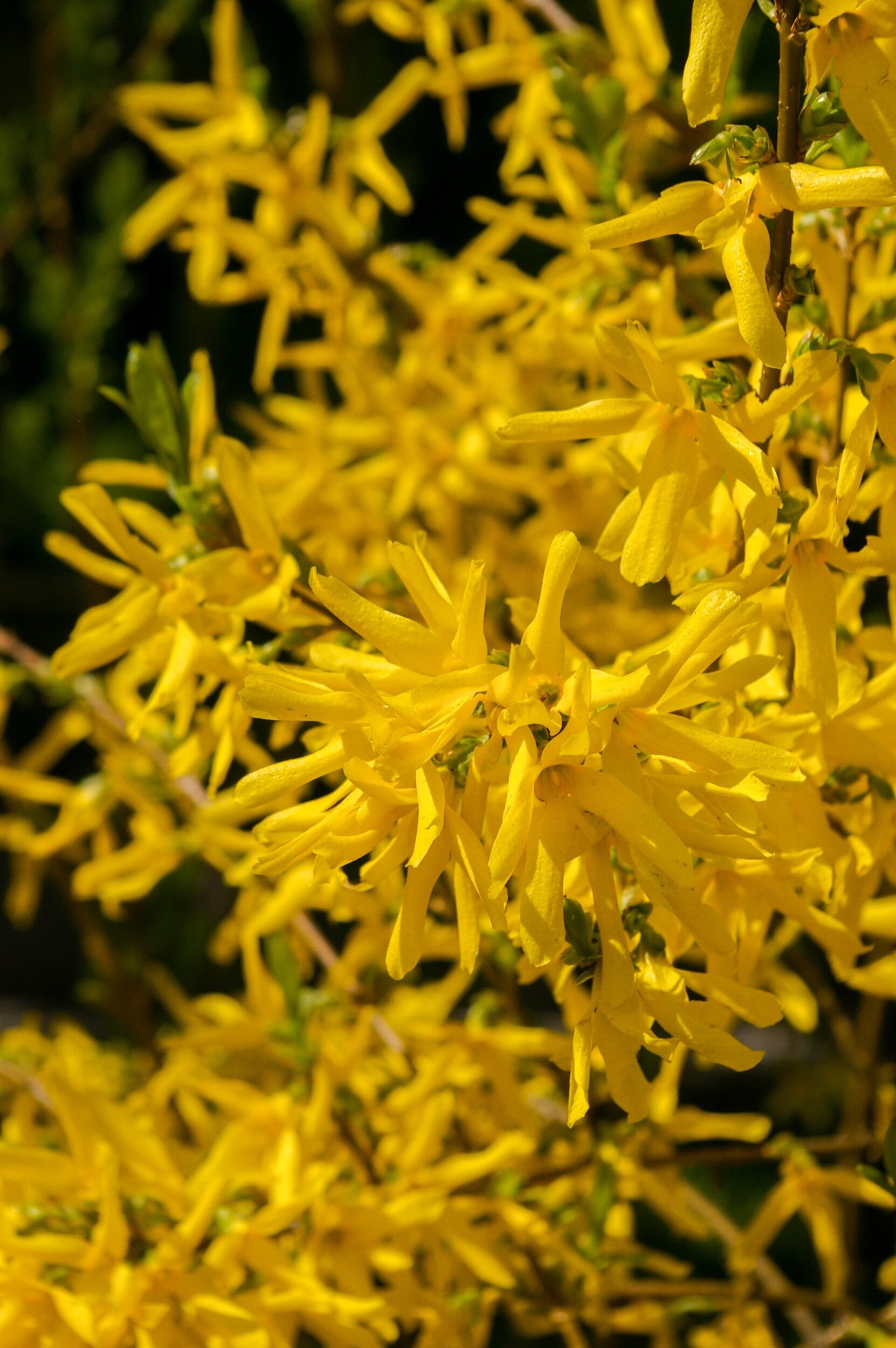How to Force Branches for Early Spring Flowers
Mimicking the seasons with simple garden tasks is an easy way to hand your children superhero-esque powers while teaching them key facts about the world around us. This will give them a sense of control and leave them with awe, instilling respect for nature through the process. And it works for parents and caregivers too! So let’s dive into forcing blooms.
There are many trees and shrubs that bloom in early spring, I’ll leave a list below, that provide a burst of colour after a long grey winter. We can wait for spring to start on its own, with the longer days, warmer temperatures and bright sunshine which will cause these plants to wake up, and dazzle with their cheerful blooms, or we can force them.
Forcing blooms is just that. The definition of force is “to make something happen or make someone do something difficult, unpleasant, or unusual” You are making the plant do what you want, on your schedule rather then waiting for it’s natural season. The result is blooms weeks earlier then it’s typical blooming time. It can be done to woody shrubs and trees but also bulbs.
What we are doing when forcing blooms, is recreating spring weather in a controlled environment, manipulating the plant into thinking it’s time. This is similar to how we manipulated winter with cold moist stratification, but a new season brings with it new factors which encourages a learning and appreciation of each seasons nuances.
So how do you force blooms on woody shrubs?
Timing
In Toronto and the GTA, forsythia begins blooming in mid April. For any woody cutting, you want to wait for the plant to have gone through a winter cycle, but not wait so long that it is about to flower anyway. For our area February and early March are perfect. This timing coincides with the ideal pruning time for trees and is a great way to make use of your pruned branches.
Select plant
See our list below for suggestions. What you are looking for is a plant that sets its buds on old wood, and blooms in early spring. This means that the flower bud is already made and is just waiting for its “wake up” signals. Plants that bloom later in the summer still need to create buds as spring begins.
Take a cutting
Forsythia are very forgiving. Don’t overthink this. Find a branch with ‘juicy’ as we call them, plump buds. The length is dependent on the look you want to achieve and the plant you are snipping from. A 60cm (2’) - 90cm (3’) length is common.
Once you snip the stem, immediately place it into water.
Prep the stem
In your sink, or a bucket of water big enough to also work in, place your cuttings into the water and while submerged, snip an inch off the bottom. Doing this underwater prevents air from entering the plants tissue and encourages water intake.
Place in Display Vessel
This can be a vase, a bucket, anything that will hold water. Fill it with warm water and if you have it handy, a packet of plant food (those packets that come with cut flowers), otherwise you can make your own with the recipe below, and add your stems.
Location
Now we recreate spring! Aim for bright, indirect light in a warm area. Spring is a very moist season and your cuttings will also benefit from humidity. Spray occasionally or place near a humidifier.
Maintain
Change the water every few days and in 2 or so weeks, you’ll see brilliant yellow blooms!
Homemade Flower Preservative
1 teaspoon sugar
1 teaspoon hydrogen peroxide
2 teaspoons lemon or lime juice
4 cups (1L) lukewarm water
Forsythia often get a bad rap in the garden world due to the singular season interest, but their bright yellow blooms are welcome after a long winter. You may notice that after this forcing process, your cutting begins to generate roots. Yes, you can plant it! Keep in mind that this shrub gets quite large and will require regular pruning to keep it playing nicely in the garden. Other then it’s flush of yellow, and acting as a hiding or nesting spot for small birds, it does not offer much interest so it is best tucked behind other shrubs to serve as a backdrop.
A native alternative to Forsythia is Lindera benzoin (Spicebush). It will produce early yellow blooms before leaves come in and will also bring a scented experience to the garden. The two plants may produce similar visuals but they require different growing conditions so it is not suitable to pull out a well performing forsythia and replace with a spicebush.
It is my goal with Buying Thyme to connect the community to nature and practice sustainability practices so we can better our patch of the ecosystem. Our flowers invite you to slow down, savor simple joys, and celebrate the beauty of the seasons wherever you take them, but our blog teaches you how you can apply everything we have learned, on your own property! For our Southern Ontario specific gardening tips make sure to peruse our other blog articles here.
Buying Thyme is your local source for seasonal, sustainably grown flowers. Visit our flower stand where we offer locally gown, cut flowers, to Durham Region. All grown right here on our North Oshawa/Hampton micro flower farm.
Unlike most florists offerings, these flowers have a negative carbon footprint with no transportation, sprays or pesticides. Each year our collection of Ontario native plants grows, which not only offers more beautiful flowers to our clients but also contributes to restoring the local ecosystem.
To learn more about our floristry services and products or to visit the flower stand click here.


